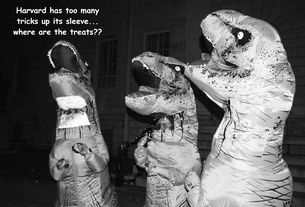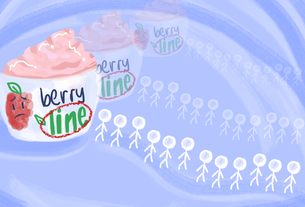Macdonell said that “different behavioral patterns” between male and female students during office hours, with male students sometimes pursuing answers to their questions more aggressively than females, call for changes to classes, sections, and office hours.
Other students, however, said that the gender disparity does not impede their interest nor pursuit of an engineering degree.
Meisha B. Brooks ’14, who concentrates in mechanical engineering, said that she does not believe that gender diversity in SEAS is a concern that warrants administrative action, and that her interest in engineering was not hindered by the school’s gender imbalance.
“I definitely do not think it needs to be addressed,” she said.
Madoff, who co-founded Harvard Women in Computer Science, an organization that promotes awareness about and opportunities for women in technical fields, said that despite her initial concerns, her experience as a computer-science concentrator has been “extraordinarily positive.”
BRIDGING THE GAP
Across SEAS, administrators, faculty, and students have worked to address the persistence and impact of the school’s gender gap, though the success of these efforts is difficult to measure.
Murray attributes part of the gender imbalance, along with disproportionately low representation of students of some racial minorities within SEAS, to variation in students’ academic backgrounds. According to Murray, even if an undergraduate starts at the introductory course Math 1a, the student can still succeed in one of the school’s engineering concentrations, a possibility that she said may not exist at other engineering schools.
“If you don’t happen to have a good math background, which is often what happens to women and underrepresented minorities more so than, let’s just say, white males, then you have a disadvantage for starting in engineering,” she said. “I want to make that disadvantage go away.”
Computer Science professor and former Harvard College Dean Harry R. Lewis ’68 said he would like women to continue to become more integrated in computer science and that he has been supportive of efforts to do so, such as by working with WICS.
According to Madoff, several faculty members in computer science—the largest concentration in SEAS—recruit female teaching fellows for their course staffs. In turn, the increased presence of women in technical fields can help encourage other women to join, said Amy M. Yin ’14, a computer science concentrator who co-founded WICS with Madoff.
“I think in general increased visibility of women in computer science has been a positive,” Yin said. “If you can’t see it, you can’t be it.”
On the student level, WICS works to reach out to female admitted students interested in SEAS, provides mentoring and support for female concentrators, and holds conferences, such as the recently launched WEcode, a set of workshops and speeches from prominent female leaders in technology like Facebook’s chief operating officer, Sheryl K. Sandberg ’91.
{shortcode-04184648400814c9d945b38296048b0df8612eb3}


